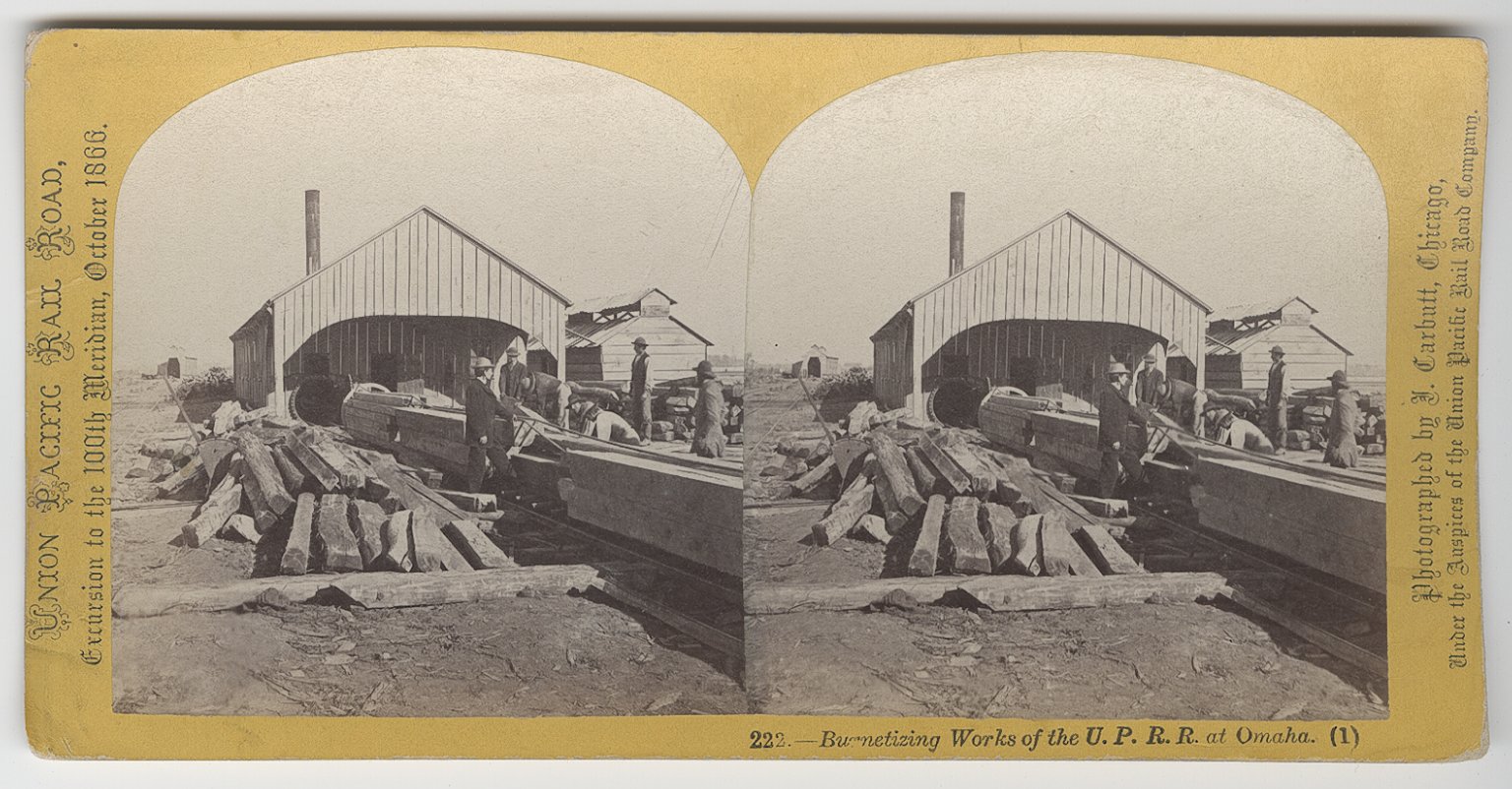"222. Burnetizing [sic] Works of the U.P.R.R. at Omaha (1)," photograph by John Carbutt
The Burnettizing works were constructed in 1865. The plant treated mainly cottonwood ties under pressure with zinc chloride. This method is called Burnettizing, after its 1838 inventor, William Burnett. However, problems began right from the start. The handcut ties were too large and the zinc chloride solution was too strong, which resulted in brittle ties. This was a common problem with early Burnettizing. Also, the plant was not big enough to handle the vast numbers of ties used in the rapid construction of the transcontinental railroad. The Omaha plant only operated until late 1866. When the UP again decided to treat ties, the large facility at Laramie only operated 1886-87. It wasn't until 1903, when a new plant was constructed at Laramie, that the UP finally committed itself to preserving ties.
